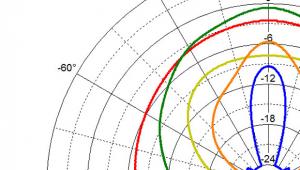Review: Red Giant A03 and TDK ST750 headphones Page 3
Measurements
To measure the A03's performance, I used a G.R.A.S. Type RA0045 ear simulator, a Clio FW audio analyzer, a laptop computer running TrueRTA software with an M-Audio MobilePre USB audio interface, and a Musical Fidelity V-Can headphone amplifier. Measurements were calibrated to ear entrance point (EEP), the point where your ear canal meets your pinna. Most measurements were done with the black silicon tips in the medium size because these seemed to fit the ear simulator best, but I also did a measurement with the "red" tips to see how the different tips affected sound quality. I inserted and reinserted each earpiece several times, and settled on a position for each that gave the most representative result.
Despite the dual-driver arrangement, the A03's frequency response measurement isn't atypical for an IEM. Characteristics include a slightly stronger than average bass response, and unusually strong response between 5 and 8 kHz, suggesting that for most listeners it might have a bit of a "smiley" sound, with boosted bass and treble (that's assuming they get a good fit). Switching to the "red" tip boosted the treble by typically +1.5 dB between 6 and 8 kHz. Adding 70 ohms output impedance to the V-Can's 5-ohm output impedance to simulate the effects of using a typical low-quality headphone amp had only a small effect, boosting bass by +1.5 dB at 20 Hz.
Total harmonic distortion (THD) at 100 dBA revealed some very weird peaks (confirmed through multiple measurements) between 4 and 6 kHz, but considering that the distortion harmonics will start at 8 and 12 kHz, respectively, I doubt this anomaly would be very audible. Isolation is good for an IEM, hitting -15 dB at 1 kHz and maxing at about -35 dB depending on the tip used. Impedance is almost dead flat at 16 ohms.
Average sensitivity with a 1 mW signal at 16 ohms measured impedance is 108.9 dB from 300 Hz to 6 kHz.
Bottom Line
From an acoustical standpoint, it seems the A03 is capable of pretty good sound, but that'll depend very much on how well its big earpieces and various tip/ring combinations fit your ears. Personally, we'd prefer a simpler, more reliably fitting solution such as the B&W C5, the RBH EP1, or another of the comparably priced dynamic IEMs we've reviewed positively. At this point, it seems to me that using dual dynamic drivers to improve headphone performance is like trying to make your car go faster by putting in two engines, instead of just putting in a better engine. But I'm keeping an open mind....





























































